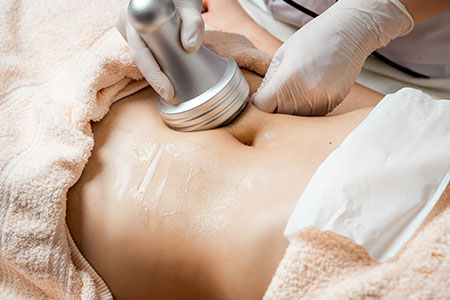Ultrasound cavitation is a cosmetic technique that removes fatty acids from the body. Liposuction must be both effective and non-invasive.
Despite the fact that there are few risks associated with this operation, it does have side effects.
Cough and acne are just brief side effects, and some patients get slight dark circles and rashes as a result of treatment. If you are looking for an ultrasonic cavitation machine visit our site or contact us for more details.
Ultrasound cavitation is well-known for its minor and insignificant negative influence on the repair.
The most time-consuming part of this technique may be consulting with a licensed, qualified medical expert.
One of the safest alternatives to liposuction and other surgical treatments is this therapy. The lymphatic system is employed after the ultrasound to separate fat cells in your body.
Ultrasonic cavitation differs from other methods like ultrasound surgery in that it does not require surgery. This suggests that healing is straightforward. As a result, the results are less obvious.
Ultrasound cavitation is a technique for detecting low body fat and shaping the body. For people wanting to reduce weight, this is not a viable option. The ultrasonic belt’s size is determined. It has been shown to provide effective therapy.
When you’re considering this therapy, learn everything you can about the cost, side effects, procedure, recovery period, and other details.
Ultrasonic cavitation cost
Ultrasound is a non-invasive cosmetic treatment. This implies you’ll have to pay for the necessary charges and therapy yourself. Physical changes, such as ultrasonic cavitation, are usually not covered by insurance.
It may differ depending on the average price:
What sort of therapeutic machine is used?
The expertise of your provider
What kind of therapy do you require?
The average cost of supplemental oil extraction is $1300.
Aside from the provider’s fee, there is no further cost for this therapy. Anesthesia is seldom required. Many people choose ultrasound cavity because the recuperation time is very brief.
This therapy is referred to as a “lunch break,” because it can generally be finished in less than an hour. After finishing work, you can walk quickly and go straight.
Ultrasonic cavitation separates fat cells using ultrasonic technology.
Ultrasound waves penetrate your skin and cause shocks to occur. The fat cells within your skin then break. Fat cells are absorbed into your lymphatic system and expelled as waste in your body within a few days. It is currently unknown what he will do after quitting the position.
A tiny research published in 2019 looked at the impact of ultrasonography on 50 women who were deemed obese by medical standards. A low-calorie diet was followed by half of the ladies, whereas the other half followed a low-calorie diet with a radiofrequency and ultrasound contour.
After 5 weeks, women who got an ultrasound scan had less body fat. In contrast to the other group, they did not drop much weight; instead, they shed body fat.
In addition to the cavitation power, the applied frequency has an impact on the number of cavities created per unit of time and the distribution of cavities according to the fluid. Lower frequencies generate larger cavities and more energy whereas higher frequencies produce fewer cavities and less energy. Bigger foams clean larger particles better, whereas smaller foams remove submicron contaminants better.
The melting temperature impacts the cavity, much as the detergents in the solution. The quantity of cavitation energy generated decreases as the temperature of the solution rises. Most cleaning solutions, on the other hand, are more effective at higher temperatures, so finding the optimal temperature to enhance cavitation strength and cleaning efficiency is a balancing act.

